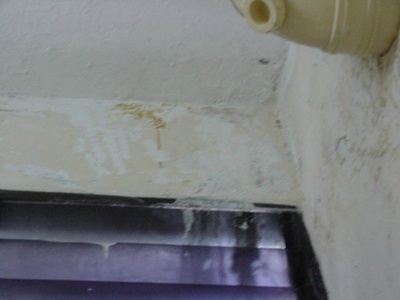Case 4
- Introduction
- Causes of Defects
- Good Practices
- Standards
- Maintenance and Diagnostics
- Remedial
- Similar Cases
- References
Water Leakage through External Wall and Joint

Introduction
Type of Building: Residential
The internal side of an external masonry wall in wet area is shown formation of efflorescence. Water leakage through wall and window was observed during the rain. Under the wind conditions in Singapore, rainwater usually hits at an angle, and thus, external wall of the toilet is subjected to wind-driven rain. Pressure from the rain drives the water into the porous mortar joints which may provide a passage for rain to flow inwards. This water will dissolve the alkaline salts and surface as efflorescence.
Efflorescence is the term used to describe the white deposit of salts or stains on the surface of stones, ceramic tiles, concrete, or bricks or other facades with cementitious backings or joints as an external crystallization. It covers a number of different deposits which vary significantly in terms of chemical composition and the method of formation.[1]
The resistance to water penetration of an external wall can be improved by increasing thickness of the wall. A thicker wall would normally provide a longer path of travel for moisture and thus increases the wall’s resistance to water penetration. However, the required wall thickness to provide sufficient water-tightness depends on the types of material used for wall construction, the exposure condition and the type of external wall finishes used [2].